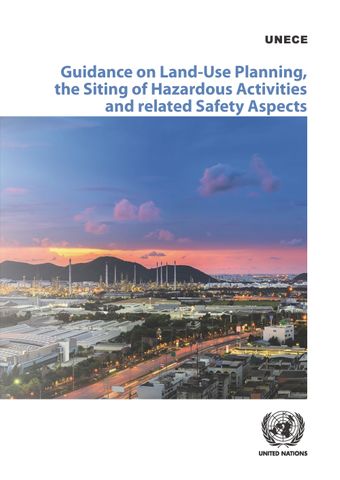- Home
- Books
- Guidance on Land-Use Planning, the Siting of Hazardous Activities and Related Safety Aspects
- Chapter
Foreword

- Author: United Nations
- Main Title: Guidance on Land-Use Planning, the Siting of Hazardous Activities and Related Safety Aspects , pp 3-3
- Publication Date: October 2018
- DOI: https://doi.org/10.18356/d0bf25a7-en
- Language: English
Industry plays a crucial role in our everyday lives by providing jobs and delivering a wide range of materials, products and services. Yet, rarely do we think about the hazardous substances that are stored, processed or produced at industrial facilities and the severe consequences that their accidental release into the soil, air or water may have on our lives, the environment and economies. The devastating impacts of such disasters, including in a transboundary context, have been demonstrated by major industrial accidents within and beyond the United Nations Economic Commission for Europe (UNECE) region over the past decades. Most of us surely remember or have heard about the accidents at the Sandoz storehouse in Switzerland (1986), the Ajka aluminium refinery in Hungary (2010) or the Buncefield explosion in the United Kingdom (2005). The effects of such accidents are often more severe if coordination between industrial safety experts and land-use planning authorities was lacking to ensure, for example, appropriate safety distances. The Tianjin disaster in China (2015) has demonstrated the severe impacts of an accident in a storage facility on the surrounding densely populated area and its homes and schools. The present Guidance on Land-use Planning, the Siting of Hazardous Activities and related Safety Aspects has been developed to avoid and minimize the adverse impacts of such accidents on our communities and environment — if they do occur.
-
From This Site
/content/books/9789213630501c001dcterms_title,dcterms_subject,pub_keyword-contentType:Journal -contentType:Contributor -contentType:Concept -contentType:Institution105

